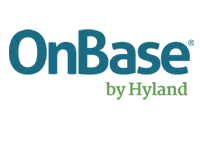Resource:
Modernizing Enterprise Content Management Improves Information Access and Quality of Care
CTCA identified its content management process as an area for improvement in providing a best-in-class patient experience.
Understanding the Situation
Cancer Treatment Centers of America® (CTCA) has five hospitals throughout the U.S. (in Atlanta, Chicago, Philadelphia, Phoenix and Tulsa) that are focused on providing an integrative care model for cancer treatment. The national hospital network treats patients from all 50 states and around the world, and attracts patients who seek individualized, innovative care they feel they can’t get anywhere else.
Due to the CTCA reputation for expertise in providing treatment for advanced or complex cancer, the hospital systems sees a larger percentage of non-analytic patients than many similar hospitals—a non-analytic patient is defined as one that has been diagnosed and/or treated at another hospital before transition to another provider, such as CTCA. Patients often arrive with years-worth of medical records for the staff to process and review, which could be challenging for the CTCA team to process quickly and efficiently.
“Sometimes we get information faxed or emailed ahead of time, but I’ve literally seen patients arrive with backpacks and boxes full of records,” said Joan Caricato, director of patient management services and the electronic health record (EHR) lead at CTCA. “All that information needs to be reviewed and indexed. It has to go through quality assurance and be workflowed to the right people. We had an integrated system, but it was still a very manual process.”
CTCA identified its content management process as an area for improvement in providing a best-in-class patient experience. The process and the software system that supported it each had several important limitations that could be upgraded so physicians could access information more quickly. The opening of the hospital in Atlanta in 2012 provided an opportunity for CTCA to build a new, more efficient process.
Identifying the Need
“We wanted to open that hospital with a brand-new records management system that upgraded and integrated our workflows, was easier to use and more efficient, and could provide integrated deficiency management. We also wanted it to provide abstracting capabilities and all the other functionality of the program we already had,” said Caricato. “To do that, we had to undergo a detailed analysis of the system changes that we needed to improve efficiency.”
CTCA had consistent processes for collecting, scanning and indexing incoming patient records, from a variety of systems used by other health care providers, but the process could still be quite challenging because of the diversity of records it received. The nationwide staff collectively developed more than 2,000 defined document types over the years.
CTCA wanted to ensure consistency in its records management operations and wanted to improve the timeliness of access to information. CTCA sought a partner to help meet these goals and included Hyland Software, Inc. on its list of vendors to evaluate. Hyland, creator of OnBase® enterprise content management (ECM) software earned the exclusive AHA Endorsement for ECM. Hyland also offers comprehensive professional services, which CTCA took advantage of to learn about best practices and redevelop its work processes.
Introducing New Technology and Processes
Team members from CTCA and Hyland spent several months reviewing processes, identifying information gaps and collecting feedback on what physicians, other health care providers and administrative staff wanted from a content management system.
The review found that the main shortcomings with the legacy system were timeliness and inflexibility. While it integrated with the EHR, doctors could not easily navigate among different screens to get all the information they wanted for a patient. Physicians could not review two sets of lab results side-by-side. Sometimes needed information wasn’t available in the system because of the time required to collect, scan and review data before it was released.
The insight from the review enabled CTCA to greatly streamline its processes, while OnBase provided the foundation to improve the quality, consistency, availability and timeliness of records and information available to users. CTCA and Hyland reduced the number of defined document types from more than 2,000 to 250 and imported all the documents and other content from the former system into OnBase.
OnBase also fully integrates with the EHR system at CTCA and has built-in quality checks to ensure documents and data are entered correctly. It can support all the input types CTCA has to process (e.g., faxed files, handwritten notes, images, electronic records, etc.) and lets users resize documents and images as needed. That has proven very popular with physicians, who are now better able to read notes, can easily switch among records and patients, and display items side-byside.
Results
“We’ve improved our access to scanned documentation immensely,” said Caricato. “Our physicians have been much happier with how they utilize and get to their information. We’ve had very rave reviews about what we’ve implemented.”
“Our throughput for scanning has improved in general. We’ve also been able to create a process that makes information processing and sharing across five hospital sites more efficient.”
Improvement is a never-ending process for CTCA. It engaged Hyland after the implementation to do an optimization review to provide insight about how the system is being used and what changes could be made to produce additional efficiency and quality improvements.
“In our post-implementation audit we found that people were indeed using the system and were using it correctly,” said Kristin Darby, chief information officer at CTCA. “The fact that there was adoption of the new system, and that it was uniform across the sites, was a huge indicator for us that the project was successful.”
